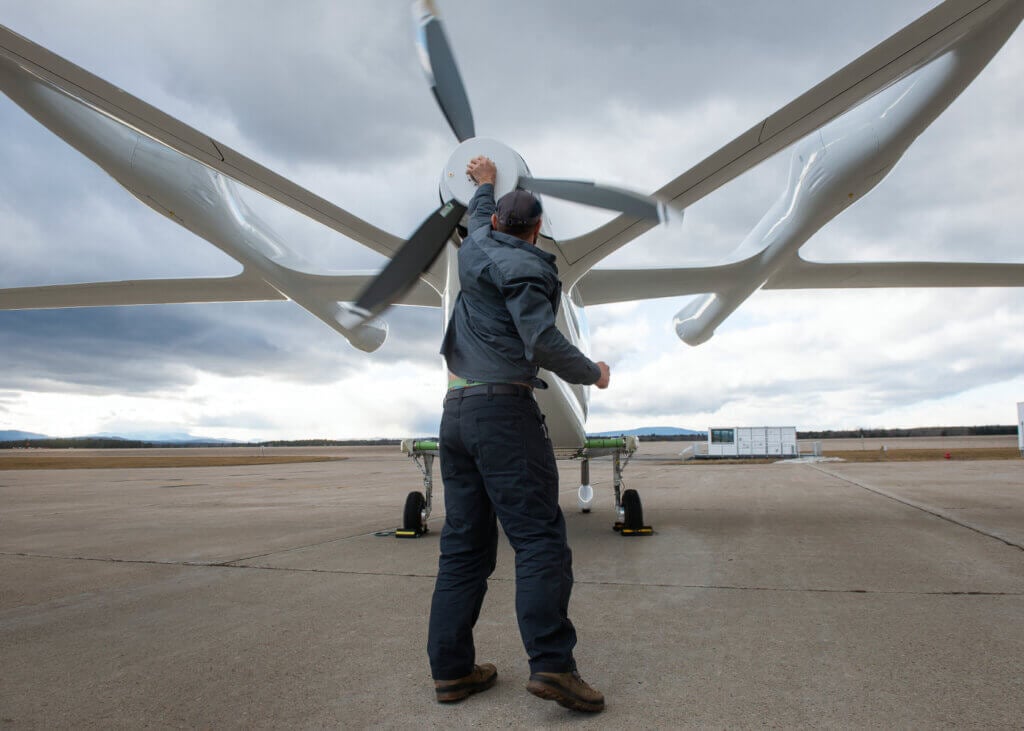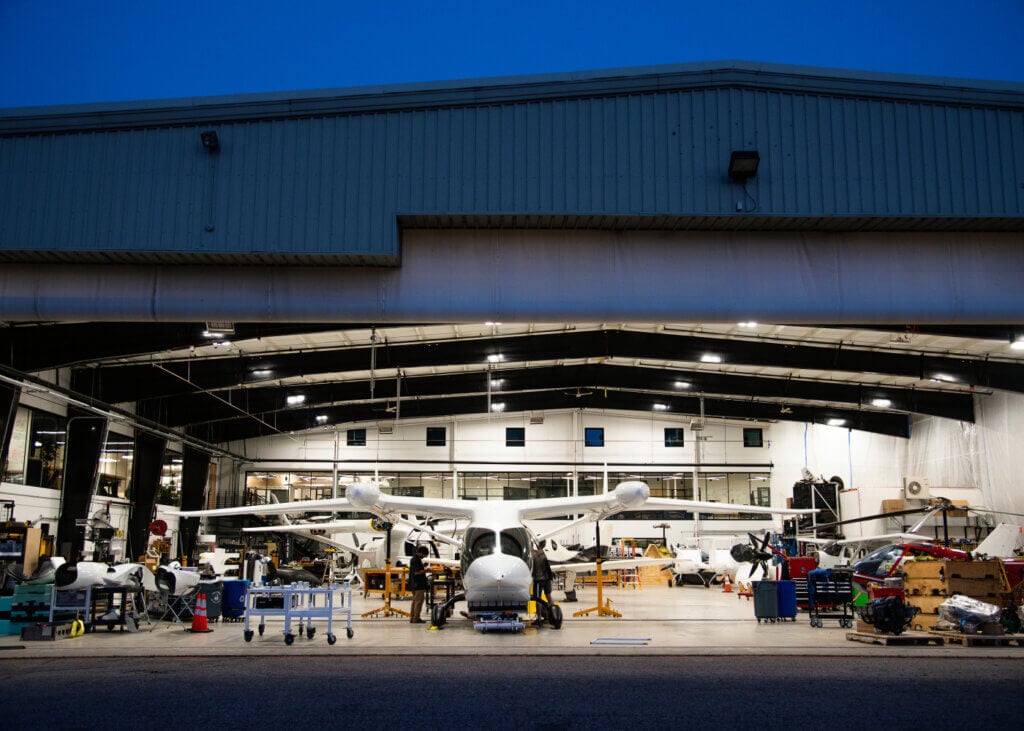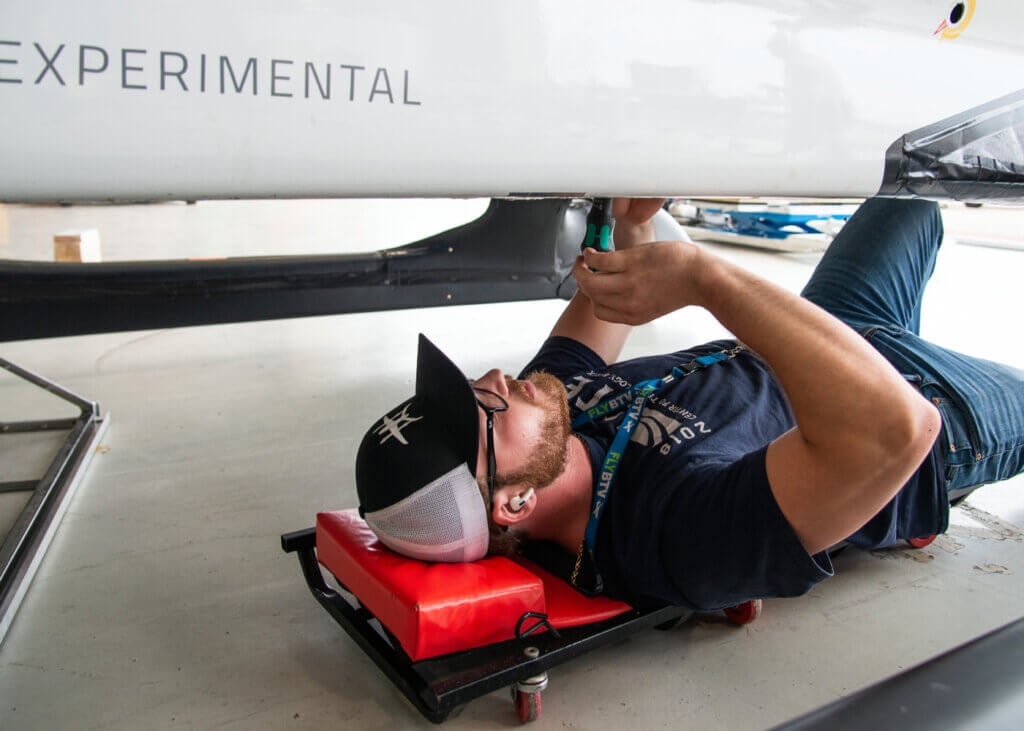The aerospace industry has been sounding the alarm about technical personnel shortages for several years, but how much will the arrival of eVTOLs complicate the situation, and what is being done about that?
We have about 24 to 46 months to get sufficient number of initial eVTOL pilots trained, but many properly-trained engineers and aircraft maintenance engineers (AMEs) will also be needed. In maintenance, this also includes technicians, mechanics and A&P (aircraft and powerplant) maintenance crews.

In a broad sense, Zac Noble, director of flight operations and maintenance at Helicopter Association International (HAI), explained that until advanced air mobility (AAM) aircraft achieve type certification, exactly what their maintenance will look like is a “significant unknown.”
“What we do know,” he said, “is that we will continue to require trained, certificated A&P maintenance professionals.” The exact number needed is of course not easy to pin down, but as explained in HAI’s recently-updated Roadmap of Advanced Air Mobility Operations, “within the anticipated high-density AAM ecosystem, there will be a significant number of daily flights, warranting maintenance to maintain the integrity of the entire AAM industry.”
Required maintenance will encompass ongoing aircraft parts and system inspections, various maintenance procedures, repairs, components replacement and more on-site (at vertiports) and off-site maintenance.
And maintenance crews will need to adequately cover both scheduled flights and unscheduled flights as well. The number of eVTOLs and volumes of flights required for the latter, which will include emergency response and disaster relief, are hard to anticipate but will likely be significant in the years to come.
In terms of the knowledge that will be needed by maintenance personnel to work on eVTOLs, the National Business Aviation Association (NBAA) has no specific concerns at this point.
“As the market continues to progress, we’ll have a better idea what gaps need to be addressed,” said Stewart D’Leon, NBAA’s environmental and technical operations director. “But the basics are already covered by what technicians are taught today.”
D’Leon noted that over the past few decades, avionics/electrical training has continued to evolve, which will help technicians be better prepared for working on eVTOLs. But he added that “this is not really any different than any other new technology that has entered aviation. The only constant in aviation is change, and we continue to adapt.”

Types of eVTOLs
As HAI notes in its roadmap, this adaptation will need to involve the creation of appropriate maintenance standards for the many types of AAM aircraft that will be taking to the air, both initially and as the industry evolves.
HAI has some concerns that current aviation maintenance training standards, while they cover a large variety of aviation segments, may not fully prepare technicians to meet the specific needs of AAM. After all, AAM aircraft have different designs and components compared to traditional aircraft.
Therefore, “training standards must be updated to emphasize new technologies in AAM, while older technologies that are out of scope should be deprioritized,” the roadmap stated.
This situation, however, potentially presents an opportunity for the Federal Aviation Administration (FAA) to “mandate that technicians receive AAM type-specific training to create a robust and safe maintenance ecosystem for near-term operations, similar to the requirements that European Union Aviation Safety Agency imposes for type-specific aircraft maintenance providers.”
HAI also suggested that aviation maintenance technician training could include new concepts and more specialized training, perhaps using virtual reality or augmented reality technologies to effectively address these new eVTOL systems and operational requirements.
However, D’Leon views maintenance for the new designs and components of eVTOL aircraft as essentially not “any different than the aircraft of today.”
He explained that while some of today’s aircraft models may look similar to others, “they vary quite a bit. Technicians are trained with basic skills and then sent to airframe-specific training,” and as new models and systems are certified, “training programs will remain up to date with aircraft-specific and system-specific content.”

Gap analysis
The Aviation Technician Education Council (ATEC) is asking NASA to support a project (called REVAM) that it created with Clemson University, with partners Utah Valley University and Northland Community and Technical College.
The proposal is a “gap analysis” of overall aerospace industry maintenance needs versus FAA mechanic airman certification standards (ACS) to identify the gap present today and the anticipated gap of tomorrow. “We are including eVTOL in this study as a subset, and part of the larger ‘advanced technology ecosystem,’” explained ATEC executive director Crystal Maguire.
Noble added that AAM maintenance will require appropriate technical education to address new technologies, but that maintenance professionals will still need to know how to work on the entire airframe, regardless of whether it’s powered by battery, hydrogen fuel cell or any other method.
Progress so far
The mechanic ACS has been updated, and Maguire said that as of September 2022, all A&P training schools were required to align their curriculums to the new mechanic ACS. “And starting this August, all new mechanic candidates will be assessed through FAA tests, using that same standard,” she explained.
“The mechanic ACS is a ‘living and breathing’ document, meaning it’s intended to evolve as technology changes to ensure training, testing, and industry workforce needs are aligned,” she said. “While it’s great to have that vehicle in place as of this summer, it needs some work to reflect industry needs. This REVAM project plan will support an FAA-industry ACS working group that oversees and makes revisions to the ACS.”
Specifically, the REVAM project plan includes quarterly meetings with an in-depth exploration of recent technological advancements, the identification of essential competencies necessary to implement maintenance strategies, and an examination of the workforce development challenges presented by new technologies.
If funded, the project participants will make formal recommendations to the FAA during 2025.
Looking forward, Noble is keeping a positive attitude, even though the helicopter industry is currently in the midst of a pilot and mechanic shortage.
“This means that there are incredible opportunities for people who are interested in working in aviation to come join the exciting world of vertical flight,” he said.






Where do I start? Yes the basics are already covered in training today but remind yourself what the basics are. They are based on the technology present in 1962 when the original training requirements were published. Not much has changed since then. The technology present on these new eVTOL aircraft are essentially not covered by the training requirements. So, some kind of training is required to bring the individuals in line with the aircraft technology.
The introduction of of these aircraft will further exacerbate the technician shortage. Our trending production of new mechanics is not keeping up with current forcasted demand that does not include eVTOLs in the prognosis. Bringing on these new aircraft will create an even greater shortage. We have trouble recruiting new talent much less training them. It doesn’t take a genius to figure out that there is a storm coming in the next couple of years.
The ACS is a living, breathing document? Yes, kind of. Changes will be small and very slow to implement. Right now on a scale of about 3-5 years to change. The current ACS requirements are essentially previously approved Part 147 curriculum. Given that, today in 2023 that curriculum is 61 years old. Think about the technology that was present in 1962 versus what is present today. The point is there will be a lot of training required to bring a mechanic to the point where he/she is knowledgeable in the technology of eVTOLs.
There has been relatively little discussion around the development of eVTOL technicians. I’ve been beating this drum for a while but I have no forum in which to present and discuss the issues. Thanks for writing this. By the way, A&P stands for Airframe and Powerplant.